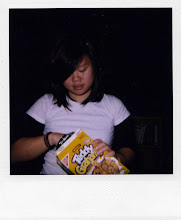I looked at Ansel Adams' photographs first. I have to admit that I don't know too much of the history of Japanese internment camps and the issues behind that, so I felt like I was looking at the photographs with fresh eyes. It was interesting, because not knowing the background, I would have thought that the Japanese were living a comfortable life. In fact, there are some photographs where you wouldn't even be able to tell where they were. For example, Mrs. Naguchi and two children are photographed in front of a house. Mrs. Naguchi looks perfectly happy standing in front of a house with her children. The house looks like something you might find in Japan. Another one is Mrs. Nakamura and family buying toys, where they look perfectly content choosing puzzles with the Japanese shopkeeper. That being said, Adams does bring in subtle differences and implications. In the one with Mrs. Naguchi and her children in front of the house looked like it could be anywhere, but upon further inspection, you notice the barracks in the background.
Is it also ironic that the website that hosts these photographs is the Library of Congress, American Memory?
I had a slightly different reaction when I saw Dorothea Lange's photographs. Her photographs are darker, focusing on the details instead of the landscape like Adams. She captures the loss of homes, displacement, and boredom that the Japanese felt. But, what I got out of both of these photographs were the importance of titles. Reading the NYT article before really looking at the powerpoint, I already had the impression that she was somewhat darker, and more "truthful" than Adams. Yet, when I looked at her photographs, I didn't get the sense of darkness in some of them, and it was only when I read the captions that I changed my mind about it.

No comments:
Post a Comment